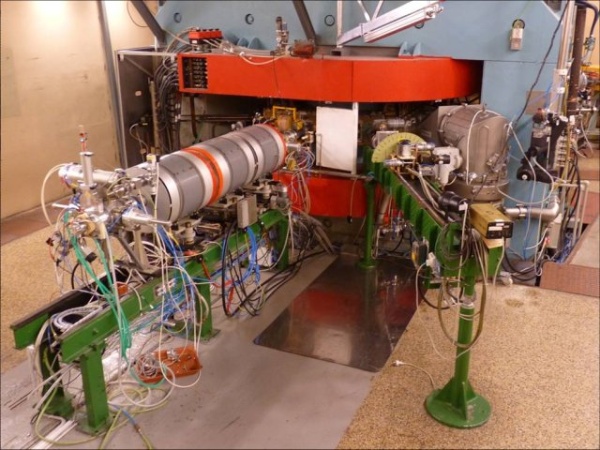
The main upgrades of the cyclotron U-120M
Isochronous cyclotron U-120M provides beams of accelerated ions (p, H─, D+ , D─, 3He2+, 4He2+). It was designed and manufactured at JINR Dubna (the former USSR) for operation in positive regimes only. It was commissioned in 1977 and since that time it has been successfully operated and systematically upgraded solely by specialists and technicians from Department of Accelerators. The key upgrade was its conversion into negative ion accelerator completed in the years 1996–1998 that resulted in increase of extracted beam currents by one order. Nowadays, the U-120M is a multipurpose multiparticle accelerator which can be tuned according to the type of particles and the use (internal/ external beam) in a wide range of energies (1–55 MeV). Accelerated beams with currents from a few nA up to tens of µA are extensively used for a wide range of experiments in basic and applied research. In connection with target stations developed at the Department of Nuclear Reactions the cyclotron is a unique and powerful source of high-intense fast neutron beams.
U-120M was originally designed as an accelerator of light positive ions (A/Z = 1–2.8) with the maximum energy up to tens of MeV (K = 40). Since the early 1990s, the cyclotron has undergone major upgrade in terms of acceleration of negative ions H−, D− in order to increase external beam intensities. An extensive modernization and replacement of almost all flooded cyclotron subsystems was realized after floods in 2002.

The cyclotron is routinely operated in positive and negative modes. Positive ions (H+, D+, 3He+2, 4He+2) are extracted from the cyclotron by means of three sections electrostatic deflection system with a magnetic kicker. Negative ions H-, D- are extracted by a stripping method using a thin carbon foil.
Parameters of accelerated and extracted beams are as follows:
| Ions | Energy [MeV] | Max. current [μA] | |
| H+ | Internal beam | 1 - 37 | > 200 |
| H+ | External beam | 6 - 25 | 5 |
| H−/H+ | External beam | 6 - 37 | 50 - 30 |
| D+ | Internal beam | 2 - 20 | > 80 |
| D+ | External beam | 12 - 20 | 5 |
| D-/D+ | External beam | 11 - 20 | 35 - 20 |
| 3He+2 | Internal beam | 3 - 55 | 20 |
| 3He+2 | External beam | 18 - 52 | 2 |
| 4He+2 (α) | Internal beam | 4 - 40 | 40 |
| 4He+2 (α) | External beam | 24 - 38 | 5 |
The cyclotron is equipped with a beam line system for the transport of the accelerated and extracted ions to the experimental and target facilities. This system includes also short beam line for the ions extracted from negative regimes. As a research facility, the cyclotron serves for experiments in nuclear astrophysics (indirect metods), enables the detailed study of nuclear reactions and it is a data source for development of new international experimental facilities. Together with the unique target stations, the cyclotron is a powerful generator of fast neutron fluxes. Due to wide range of energies and variety of accelarated particles the cyclotron is effective tool for nuclear data measurements and production of radionuclides for research.
Moreover, accelerated ion beams can be adapted for other applications like irradiations of various samples and materials under vacuum or on the air after beam extraction through vacuum window (i.e. irradiation of biological samples, radiation rezistence tests of semicontrolled devices etc.).
The main research activities are focused on simulations of beam dynamic parameters during accelaration and extraction process and on the development and design of target systems for various type of irradiations and experiments.
The main upgrades of the cyclotron U-120M
- Isochronous cyclotron U-120M was designed and completed in the „LJaP “ division of JINR in 1977
- physical design and realization of the beam line system, beam extraction by means of electrostatic deflectors (new design of quadrupoles, magnet monochromator, bending magnets OM1, OM2), 1980–1982
- axial injection system, 1990–1994
- project of acceleration of negative ions, 1992–1996
- new control system (LAN, Novell Netware 3.12, ISOLDE), 1995–1996
- mathematical model of the cyclotron, beam dynamic simulation, continuous development
- new cooling system, 2002
- floods in 2002
- central LN2 distribution, 2006
- new dee with holes for evacuation

